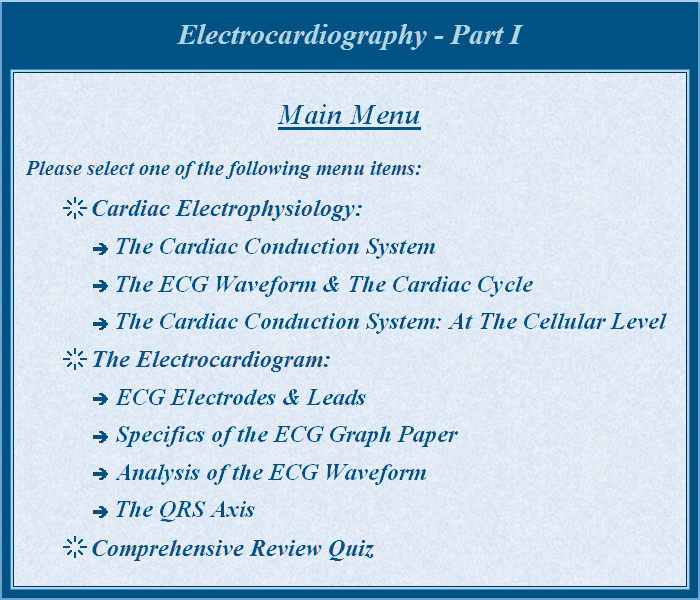
- The Cardiac Conduction System - Detailed description of the properties and tissues of the cardiac conduction system (sinoatrial (SA) node, internodal tracts and Bachmann's bundle, atrioventricular (AV) node, bundle of His, right and left bundle branches, and the Purkinje fibers). Through graphics and computerized animation, the user is shown how the tissues of the cardiac conduction system initiate atrial and ventricular depolarization and repolarization.
- ECG Electrodes and Leads - Describes the correct placement for each of the electrodes in the 12-lead ECG and the characteristic waveforms produced by each lead. Also details the three-electrode monitoring system and gives examples for modified three-electrode Lead II and MCL6 monitoring. Through graphics and computerized animation, the user is shown why the shape of the waveform in a certain lead is either positive (above baseline) or negative (below baseline).
- Specifics of the ECG Graph Paper - Details the vertical and horizontal squares found on the ECG graph paper as well as the various methods utilized to calculate heart rate from an ECG tracing. Examples of various ECG strips are given and the user is asked to input the correct heart rate.
- Analysis of the ECG Waveform - Describes the various waveforms inscribed on an ECG tracing; their origination, normal configuration, and duration.
- The QRS Axis - Details the hexaxial wheel and describes how to evaluate the QRS axis. The user is shown how to calculate the QRS axis and determine whether it is Normal, Right Axis Deviated, Left Axis Deviated, or if it is an Indeterminate Axis.

|

|
Copyright © 1995 - 2020, C&S Solutions. All rights reserved.
All software is copyright and protected under U.S. Copyright Law. Text, graphics, animations, audio, and video content of each software program may not be reproduced or transmitted in any form or by any means, electronic or mechanical, including photocopying, recording, or any information storage and retrieval system, without specific permission in writing from C&S Solutions.